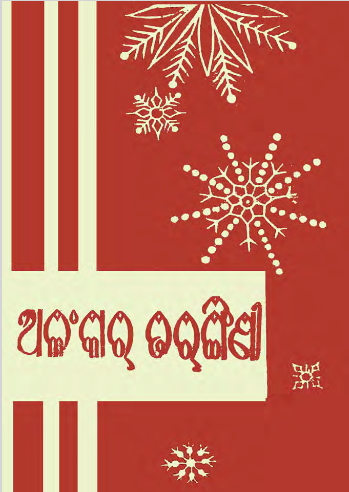Alankar Tarangini, authored by the eminent Odia writer Kulamani Das, is a remarkable essay collection that has made significant contributions to Odia literature since its initial publication in 1929. The book, with its insights on literary ornamentation and aesthetics, has stood the test of time and continues to be a vital resource for students, scholars, and enthusiasts of Odia literature.
The title Alankar Tarangini translates to “Waves of Ornamentation,” reflecting the essence of the book’s content. The term “Alankar” refers to literary devices and embellishments in poetry and prose, while “Tarangini” symbolizes the flowing nature of these elements. Kulamani Das skillfully navigates through the vast ocean of literary ornamentation, discussing its significance, varieties, and application in writing.
In Alankar Tarangini, Das presents a thorough analysis of various alankaras, or literary figures, that enrich the beauty and depth of Odia literature. He meticulously categorizes these devices, such as metaphors, similes, alliterations, and personifications, elucidating their roles and effects in enhancing the artistic quality of literary works. Through engaging examples and discussions, the author provides readers with a comprehensive understanding of how these elements function to evoke emotions, create imagery, and convey deeper meanings.
The essays in this collection encourage readers to appreciate the subtleties of language and the importance of aesthetics in writing. Kulamani Das emphasizes that the use of alankaras is not merely decorative but serves to elevate the overall impact of the text. By mastering these literary devices, writers can create more resonant and memorable works that engage the reader’s senses and emotions.
One of the standout features of Alankar Tarangini is its clarity and accessibility. Kulamani Das’s writing style, characterized by its simplicity and elegance, invites readers from diverse backgrounds to delve into the world of literary appreciation. His ability to explain complex concepts with ease is a testament to his deep understanding of literature and pedagogy.
Additionally, the book features discussions on the relationship between language and culture, highlighting how literary ornamentation reflects the ethos and aesthetic sensibilities of Odia society. Das draws connections between historical context and literary expression, showcasing the evolution of Odia literature over the years. This contextual approach enhances readers’ comprehension of how alankaras have adapted and transformed within the cultural milieu of Odisha.
Alankar Tarangini has had lasting repercussions in the academic sphere, serving as a foundational text for students of literature. Its influence extends beyond the classroom, inspiring aspiring writers and poets to explore the richness of Odia language and its literary tradition. The book’s legacy is evident in the continued recognition and use of alankaras in contemporary Odia literature, affirming its relevance even decades after its initial publication.
In conclusion, Kulamani Das’s Alankar Tarangini stands as a celebrated contribution to Odia literature, offering valuable insights into the art of literary ornamentation. Its blend of scholarly analysis and accessible prose ensures that it resonates with readers of all levels. As we engage with this timeless work, we are reminded of the power of language and the beauty of literary expression, nourishing the love for literature in our hearts. Whether you are a seasoned scholar or a curious reader, “Alankar Tarangini” is an essential addition to your literary collection, inviting you to ride the waves of ornamentation in Odia literature.
Books Info
| Books name | Alankar Tarangini/ଅଳଙ୍କାର ତରଙ୍ଗିଣୀ |
| Author | Kulamani Das |
| No Of pages | 198 |
| Publisher | Cuttack Publishing House |
| Publication | 1929, 1989, ne. |
| Printed At | NA |
| Distributor | NA |

